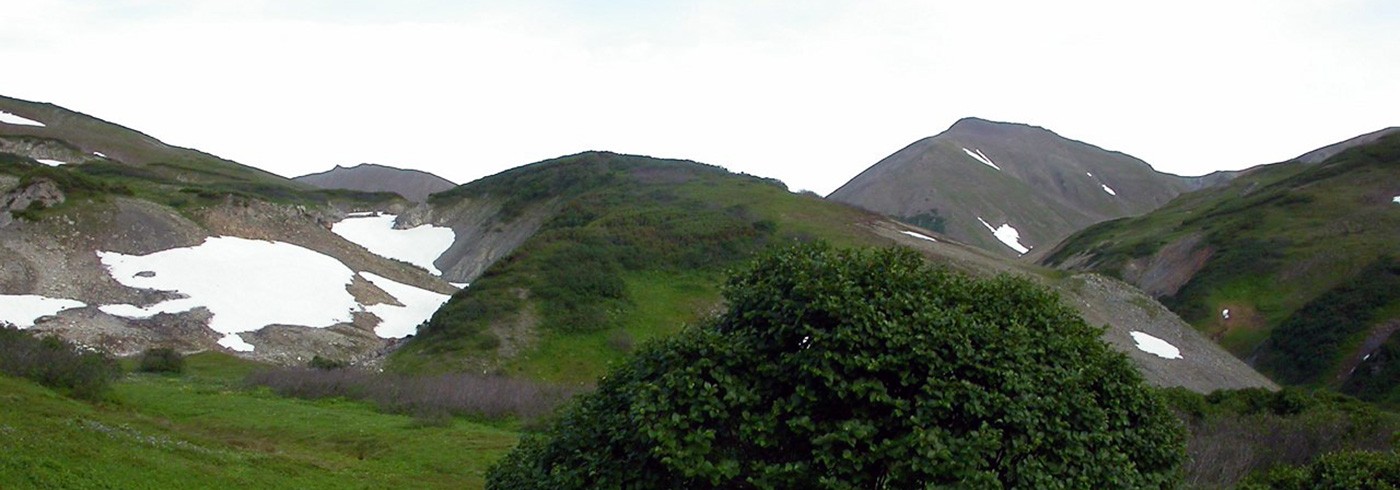Herbivory and plant biodiversity in an arctic environment
1 August 2005 - 15 October 2005In an arctic environment, abiotic factors such as a short growing season, low temperatures, low nutrient availability and high wind velocity often have a dominating influence on plant distributions. Anyhow, biotic interactions may still play an important role in shaping plant diversity patterns. Such biotic interactions include both plant–plant interactions, i.e. competition and facilitation, and plant–animal interactions, i.e. herbivory and pollination.
Herbivory can alter plant trait distributions and population dynamics, interspecific relationships (Mulder 1999, Zimov et al., 1995) and the productivity of the community (Manseau et al. 1996, McKendrick et al., 1980) through several mechanisms, e.g. defoliation, trampling, seed dispersal, seed predation and changes in nutrient availability.
The consequences of grazing at the level of the individual plant could be the death of the plant (including seed predation), or changes in resource or biomass allocation, photosynthetic rates, reproduction and plant morphology (Archer and Tieszen, 1980, Brown and Allen, 1989). Several plant traits have been suggested to correlate to the ability of the plant to tolerate or resist damage. These traits include secondary substances, morphological structures (thorns, bristles, hairs, etc.), growth form and phenology. The adaptive value of these traits, and hence the abundance of species possessing them, is expected to increase with the intensity of grazing.
We thus predict that patterns of species diversity and trait distributions will vary with grazing regime and productivity gradient. In this regard it is particularly interesting that the historical and recent grazing regimes both differ considerably between the regions we visited during the expedition Beringia 2005. Historically Kamchatka has had small populations of large grazers apart from reindeers. Presently densities of reindeers are very low, and bears and rodents are probably the most important grazers. The investigated areas consist of two different types of tundra: wet lowland tundra (photo 1) and a more alpine tundra type (photo 2). The alpine sites in Chukotka were characterized by high densities of reindeer and small mammals like hares and rodents. Wrangel Island has very high densities of muskoxen, reindeer and geese, while the alpine Alaskan sites had moderate densities of muskoxen, rein-deers and smaller mammals. The wet sites all had very low densities of larger herbivores and rodents were the dominating grazers in this tundra type in both Chukotka and Alaska.
In the field during the expedition we recorded plant community responses in terms of species diversity, abundance and the distribution of plant traits from 4 sites in Kamchatka, 4 sites in Chukotka, Wrangel Island and 4 sites in Alaska. The presence of all vascular species, mosses and lichens were recorded in five 0.5 m × 0.5 m plots at each site (photo 3). Abundance was estimated as the frequency of occurrence in 25 10 cm × 10 cm quadrates per plot. Plant biomass was sampled from each plot in order to estimate productivity. The current grazing regime was recorded at the different study sites by a system of triangle transects (1 km × 1 km × 1 km), where the vegetation type was noted and all animal traces (i.e. faeces, grazing, trampling, and presence) were recorded.
For all species of herbs recorded in plots we measured total height and height of flower in the field and recorded the amount of non-vertebrate grazing in 10 individuals. We also sampled 10 individuals per species that were dried and brought to the laboratory for measurement of additional traits, including specific leaf area, growth form, height, seed characteristics, allocation to reproductive/vegetative tissues and secondary substances.
Below we present some first results in terms of species diversity patterns among sites. Ultimately our aim is to link biomass (productivity) and current grazing intensity to plant species diversity and trait distributions.
A brief overview of our results gives us a composition of the different plant functional groups in the sites (figure A). There are large variations in species diversity patterns but no clear differences between regions.

A. Diversity distributions of plant species for all sites. B. Plant species diversity differed between the two different types of tundra; alpine tundra and wet tundra. C. Vascular plant biomass in the two different tundra types.
The wet tundra generally has lower total numbers of species, especially of vascular plants, than does the more alpine tundra (figure B). The biomass from vascular plants sampled in the plots also indicates a higher productivity of vascular plants in the alpine tundra areas (figure C). The low number (especially of herb species) and biomass of vascular plants in the wet tundra sites are probably not only due to the microclimate but also to difficulties to recruit in a dense moss layer, as was often the case in the wet tundra. The alpine tundra sites often consisted of southern slopes where the microclimate is optimal, and this might be especially important for nonevergreen species like herbs and grasses.
The data from the herbivory transects are yet to be analysed, but our first impression from the field is that herbivore densities are higher at the alpine tundra sites than in the wet tundra sites.




